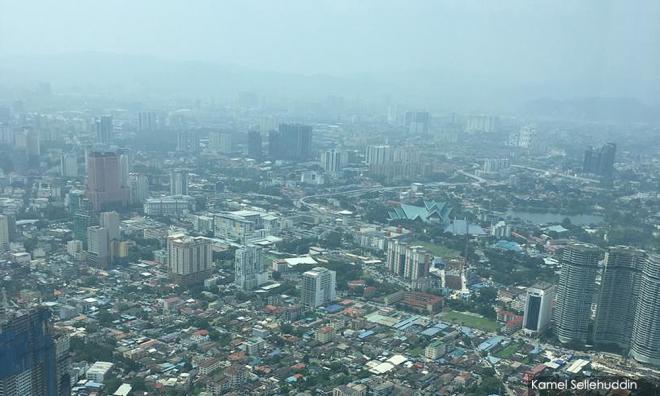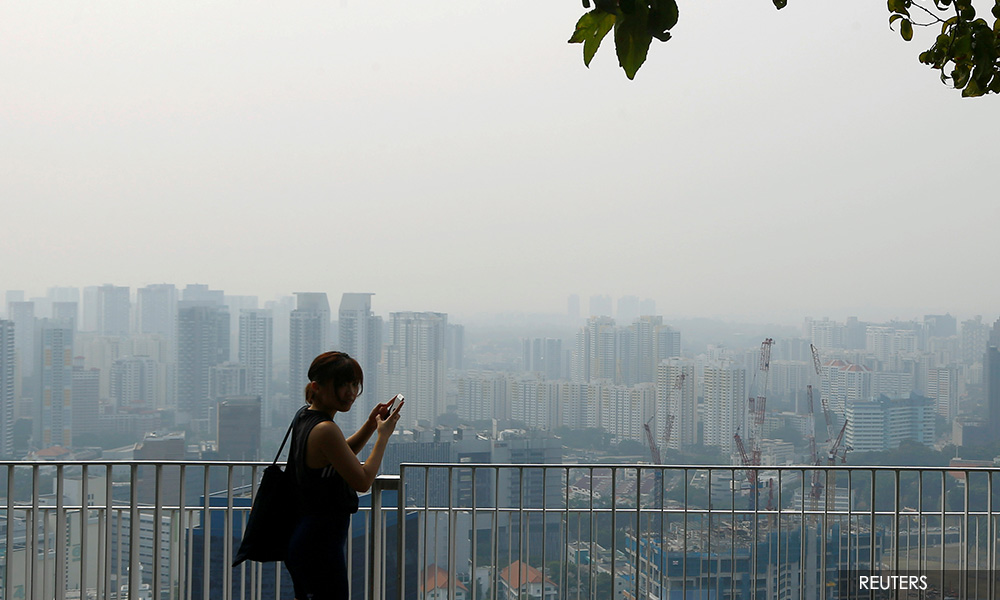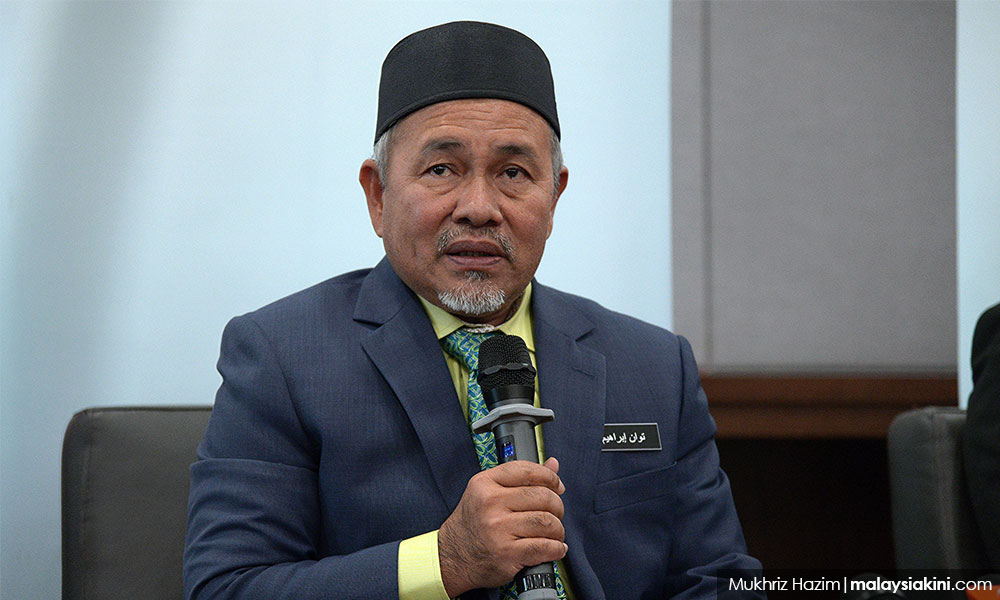
On Aug 3, 2020, Malaysia’s Environment and Water Minister Tuan Ibrahim Tuan Man announced in Parliament that plans to introduce a Malaysian Transboundary Haze Act (MTHA) have been scrapped.
This was an unexpected announcement, considering his earlier statement that “all the good initiatives introduced during the Pakatan Harapan administration will be continued in the (new) Environment Ministry”.
As Indonesia remains on high alert for fires and haze threatens to descend on us again in the coming months, the shelving of the MTHA represents a significant missed opportunity on several counts.
Firstly, the MTHA would have been a strong message to other Asean member states that Malaysia is serious about holding accountable any of its own entities found to be complicit in haze-producing fires.
Secondly, this legal instrument would have been a welcome additional deterrent against errant companies, as the government’s capacity to respond directly to fires and haze is reduced during the pandemic.
1985: Asean formally acknowledges haze as a regional concern.
1997: Air pollution over Southeast Asia remains the worst transboundary haze incident in history.
2003: Legally-binding Asean Agreement on Transboundary Haze Pollution (AATHP) comes into force with six ratifications.
2014: Indonesia becomes the final Asean member state to ratify the AATHP.
2014: Singapore passes its extra-territorial Transboundary Haze Pollution Act, targeting any entity causing haze in Singapore.
2015: Severe haze episode, by some estimates causing 100,000 deaths around the region. Malaysia first expresses interest to pass a similar law.
2016: Malaysia announces that it would no longer be pursuing such a law, favouring diplomacy. In the most recent serious haze episode. Indonesia once again refuses assistance from Malaysia and others.
2019: The Ministry of Energy, Science, Technology, Environment and Climate Change (Mestecc) proposes the Malaysian Transboundary Haze Law to the cabinet.
2020: Environment and Water Minister Tuan Ibrahim Tuan Man announces that plans for the law have once again been scrapped
Malaysian politics: A primer
The Pakatan Harapan government came into power in the 14th Malaysian general election (GE14) held on May 9, 2018, after 61 years of single-party rule under Barisan Nasional.

Before the election, environment matters were under the remit of the Ministry of Natural Resources and Environment (MNRE). Under the Pakatan Harapan administration, several ministries, including MNRE, were combined to form the Ministry of Energy, Science, Technology, Environment and Climate Change (Mestecc), headed by Yeo Bee Yin (above).
An abrupt political move in February 2020 resulted in Perikatan Nasional, a new coalition formed by a combination of politicians from both Barisan Nasional and Pakatan Harapan, coming into power less than two years after GE14. In the ensuing cabinet reshuffle, the environment branch of Mestecc was refashioned as Ministry of Environment and Water (Mewa).
Haze legislation: The Malaysian to and fro
One of the major environmental issues that arose during Mestecc’s tenure was transboundary haze. Haze is caused by forest and peat fires, mostly in Indonesia, and becomes transboundary when the ensuing smoke travels across national boundaries. In maritime Southeast Asia, the countries most affected by haze are Indonesia, Malaysia and Singapore.
Here in Malaysia, the health and economic impacts of haze are massive. Minute haze particles are small enough to enter the lungs and bloodstream, causing a range of respiratory, dermatological and ophthalmological diseases. A Harvard study in 2016 estimated that the 2015 haze caused 65,000 excess deaths in Malaysia.
A local 2016 study which focused on personal spending estimated that losses from the 2013 haze totaled RM1.5 billion! This included off-budget health spending (purchase of masks, medical costs, etc) of RM410 million and productivity-related losses (sick days, foregone income, etc) of RM958 million. Tourism also takes a severe hit during the haze season and government expenditure (on water bombing, cloud seeding, etc) also increases.

The 2019 haze came after several relatively haze-free years; the previous serious haze episode was in 2015. In 2019, old ‘finger-pointing’ habits resurfaced: when Malaysia called for immediate action over the fires, Indonesia’s Environment and Forestry Minister retorted that Malaysia should be more transparent about their own haze-causing fires. When Mestecc responded with satellite evidence showing otherwise, Indonesia announced that four out of the 30 companies that it had seized for haze-related investigations had Malaysian links.
Following this, Mestecc proposed the MTHA to the cabinet on Sept 19, 2019, and was awaiting approval to proceed to draft the MTHA. After many months of silence during the political transition, we finally now know the MTHA has been shelved.
This is not the first time this has happened. Soon after Singapore brought into force their Transboundary Haze Pollution Act (STHPA) in 2014, Malaysia said it would consider a similar law. However, MNRE later announced in 2016 that it preferred to continue diplomatic engagement over haze instead.
The Singapore experience
Indonesia, Malaysia and Singapore, along with all other Asean member states, are signatories of the Asean Transboundary Haze Pollution Agreement (AATHP). This legally binding agreement is the centrepiece of an ecosystem of treaties, plans and roadmaps that form the transboundary haze governance mechanism in the region, which has been active since 1985.
While the Asean platform has been useful in keeping the conversation open on an otherwise diplomatically sensitive subject, the fact that the region continues to suffer from almost annual haze incidents many decades on highlights the limitations of the Asean approach to environmental governance.

This diplomatic fatigue led Singapore to pass its STHPA, an extra-territorial law that would hold accountable any entity causing haze in Singapore. While on the surface, this legalistic approach seemed contrary to the discursive Asean way of engagement, a closer look at the AATHP [Article 4(3)] reveals that member states are supposed to take legislative measures to implement their obligations under the AATHP.
However, Asean agreements like the AATHP often leave much space for national interpretation. Indeed, Indonesia interpreted the STHPA as a violation of its sovereignty. Hence, Indonesia has been uncooperative about sharing evidence, maps and other information with Singapore to support its investigations. As a result, no entity has been successfully prosecuted under the STHPA yet.
A ‘copy-paste’ Act?
Mestecc’s proposal to the cabinet was the outcome of an extensive series of consultations among public (government) and private (academia, NGOs, legal experts and industry) stakeholders, including this author.
One clear conclusion from the consultations was that the MTHA would not be a ‘copy-paste’ of the STHPA. Instead, with the advantage of being able to learn from the Singapore experience, the MTHA would be drafted to mitigate Asean sensitivities. Particularly, the MTHA’s jurisdiction would be limited to Malaysian companies operating in Indonesia only.

Hence, it came as a surprise that the MEWA minister, Tuan Ibrahim (above), cited Singapore’s experience as the main reason for scrapping the MTHA, saying Malaysia did not want a ‘cosmetic’ solution that could not tackle the haze problem. He further claimed that evidence against companies would be difficult to procure.
The main reasons why Singapore had difficulty procuring evidence was because the entities implicated were Indonesian in origin. The proposed MTHA, limited to Malaysian entities, should have been able to mitigate this, and in fact, would have been able to support Indonesia’s efforts in holding accountable the Malaysian entities that they have identified.
Political and diplomatic considerations
The minister instead stated that “the government believes that the best step is to enhance cooperation with neighbouring countries and Asean”. While it is not clear how MEWA plans to enhance cooperation over the haze, history shows that Indonesia has been consistently downplaying bilateral cooperation (including suspending an MOU and refusing assistance) and that decades of Asean diplomatic engagement have, so far, been ineffective.
A valid concern within the government machinery may be that such a legalistic approach may damage whatever diplomatic goodwill that has been built up over the years. However, if dealt with carefully, diplomatic cooperation and legal solutions should be able to exist simultaneously, especially if these involve enacting laws to hold domestic wrongdoing parties to account.
Yeo Bee Yin, in response to the news of the scrapped law, said: “We should find solutions to the problem, not problems to the solution”, and that the MTHA “may still be insufficient, but it will be better. We (should not) act only when we have a perfect solution”.
And she’s right. An MTHA may not necessarily be the perfect silver bullet in solving the region’s haze conundrum. However, the scrapping of the MTHA is a missed opportunity for Malaysia to show that it is serious about holding its own entities accountable, and that neighbouring countries should do the same.
Haze in the time of Covid-19: A two-in-one crisis
While regional weather forecasts foresee a cooler and wetter year ahead due to a neutral El Niño Seasonal Oscillation prognosis, there is still a possibility that we will see a moderate haze season in the coming months. After all, haze-producing fires are not a purely natural phenomenon but are strongly driven by human activities on the ground. And despite the Covid-19 slowdowns in the region, such activities seem to remain very much unchanged.
Covid-19 has cut into the resources available for emergency and medical responses more generally, as well as forest fire monitoring and implementation more specifically.
Understandably, governments around the region have limited capacity to simultaneously handle a Covid-19 and haze crisis. Hence, preventive strategies such as the proposed MTHA would have been a useful added deterrent to avoid such a two-in-one crisis.
Fires and haze are issues fraught with political economy and patronage undertones. It is worrying to consider if the MTHA had been scrapped because of pushback from powerful political and economic stakeholders, resigning us to a hazy fate yet again.
DR HELENA VARKKEY is a Senior Lecturer at the Department of International and Strategic Studies, Universiti Malaya. - Mkini
This article was first published in Between the Lines, a weekday email newsletter that sums up the main Malaysian news of the day, with context and a fair bit of sass. Sign up for it here.
The views expressed here are those of the author/contributor and do not necessarily represent the views of us.



No comments:
Post a Comment
Note: Only a member of this blog may post a comment.